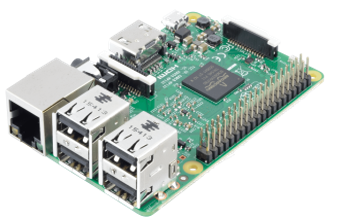Intelligent Wireless System for PV Supervision Based on The Raspberry Pi
Volume 4, Issue 6, Page No 94-98, 2019
Author’s Name: Youssef Bikrata), Khalid Salmi, Kamal Azghiou, Ahmad Benlghazi, Abdelhamid Benali, and Driss Moussaid
View Affiliations
Electronics and Systems Laboratory, Faculty of Sciences, Mohamed First University, Oujda, Morocco
a)Author to whom correspondence should be addressed. E-mail: y.bikrat@ump.ac.ma
Adv. Sci. Technol. Eng. Syst. J. 4(6), 94-98 (2019); ![]() DOI: 10.25046/aj040611
DOI: 10.25046/aj040611
Keywords: Monitoring system, Photovoltaic, Raspberry PI3, Wi-Fi, Bluetooth, Transfer, Processing, Acquisition
Export Citations
Photovoltaic systems and monitoring go hand in hand. There is no better way to check the health of your photovoltaic system than to utilize a remote monitoring system. Monitoring and tracking of photovoltaic systems are crucial for reliable functioning and optimal yield of any solar electric system. This paper aims to introduce a remote electronic monitoring system. The said system will allow us to retrieve, process and transfer, in real-time, the photovoltaic station data remotely. The main objective of this work is to build a robust system that could be said as a reliable and low-price system, which will allow the transfer of the installation state to the remote operator in real-time or store it on an online database. Our intelligent wireless system is contained two parts, the first part including a hardware system designed around a microcontroller card (the Raspberry pi3 card) and a second part including the software part, which is the installation and configuration of open source applications on the Raspberry card. On the other hand, the configuration of an online database is presented. The database will offer us the possibility to store and process the station’s data remotely and in real-time. Moreover, we also developed an application that plays the role of an interface for our monitoring Raspberry Pi3 machine.
Received: 31 March 2019, Accepted: 04 October 2019, Published Online: 22 November 2019
1. Introduction
Renewable energies (REs) are a set of means of generating energy from unlimited (on a human scale) sources or resources, available without time limits or recoverable more quickly than they are consumed. Renewable energies are often spoken of as opposed to fossil fuel energies, whose stocks are non-renewable and limited: coal, oil, natural gas. The renewable energies are unlimited which produced from many sources such as the wind and the ray of sun [1].
REs are often referred to as “clean energies” or “green energies”. The environmental effect of their operations is very low which makes them a major element in companies’ Corporate Social Responsibility (CSR) strategies in terms of sustainable development. The exploitation of renewable energies theoretically generates few pollutants: in particular, electricity of renewable origin emits very little CO2 especially when compared to fossil fuels such as coal. For this reason, renewable energies are a particular vector of the fight against global warming. They are also considered as a factor of resilience because they allow decarbonized and decentralized productions.
There are different energy sources that produce several types of renewable energy. Maybe the most known is still the solar energy. This type of energy comes directly from the capture of radiation coming from the sun. Specific sensors are used to absorb the energy of the solar radiation and rebroadcast it according to two main modes of operation:
- Solar photovoltaic (solar photovoltaic panels): solar energy is captured for the production of electricity.
- Thermal solar (solar water heater, heating, solar thermal panels): solar heat is captured and is redistributed, and more rarely used to produce electricity.
The global market stagnated last year, with around 98 GW deployed. For 2019, the experts expect stronger solar growth, PV Market Alliance warned its forecast for 2019 that global solar installations would grow by about 20% to as much as 120 GW, and volume of 180-200 GW by 2022 [1].
In the recen years, Morocco has encaged in a startegy of alternatives energies, all determneted to move from a country importing all its oil and gas needs to major producer renewable energy (figure2), whereas it depended totally, and until a near past, of the outside for the energies needs.
Through its renewable energy development strategy, Morocco aims to ensure its relativity energy independence, contribute to reducing emissions and produce renewable energy that will shape the future of human consumption.
 Figure 1: The global solar PV market will grow stronger than expected according to IHS Markit.
Figure 1: The global solar PV market will grow stronger than expected according to IHS Markit.
The kingdom has made tremendous progress in the fieled of green enrgy since 2009 and has set ambitious goals in the field of clean energy. The Moroccan strategy aims to increase the share of renewable energies to 42% by 2020 and 52% by 2030. In addition to the gaol of reducing energy consumption to 12% by 2020 and 15% thanks to energy efficiency[2,3].
For this reason, the average power in next-generation installations is increasing day by day, with the need for systems capable of supervising and monitoring installations in a permanent form and interacting with all elements, thus ensuring a high level of optimal efficiency, from a technical as well as an economical point of view. At this point, it is essential to develop new infrastructures and technologies, to install remote monitoring system that allows a significant reduction in time response and keeps track on the PV energy production from a given PV plant[4].
The supervision, or monitoring, of isolated PV plants makes it possible to evaluate the quality of operation of the system and, conversely, to detect possible anomalies. It is generally composed of a data acquisition and storage system, a signal processing or analysis software, and a display. In some cases, the system is coupled with sunshine and temperature probes. Many PV inverter manufacturers offer their own monitoring connected to their inverter. Most often the data acquisition system is integrated into the inverter and its consultation is done by dedicated software. Sometimes, the supervision is composed of a datalogger which makes it possible to centralize the data of several inverters and possibly to make them accessible remotely via internet.
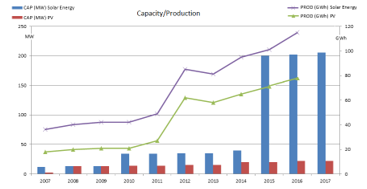 Figure 2: Photovoltaic energy development in Morocco.
Figure 2: Photovoltaic energy development in Morocco.
Our objective in this article is to present the developed wireless monitoring system. The process is divided into two parts; the first part is the description of the used hardware mainly built around the Raspberry Pi3, the second part is the software development including the installation and the configuration of open source applications to settle the incompatibilities problem with open source systems. The proposed monitoring system will communicate with the inverter to retrieve, transfer and process data using a new open-source application in a completely remote and wireless way.
The paper is divided into three sections. We will start with a discussion on the encountered problematic and propose an adequate solution. The second section describes the choice of equipment for the designed system to meet the desired requirements. Finally, the last section presents our proposed wireless system for monitoring photovoltaic plants. The system is divided into three main parts: The data acquisition from the inverters via Bluetooth, the data processing in Raspberry Pi3[5] and the data transfer via Wi-Fi.
2. Problematic
There are different solutions to monitor the production and operation of an inverters or photovoltaic panels. The main selection criteria and questions to ask are:
- What information and settings will be saved and viewed?
- How will this information be saved and how will it be consulted?
- What will be the sources of the information: electricity meters, inverters, datalogger?
- What is the cost of the production tracking and monitoring system?
Nevertheless, the existing PV monitoring applications in the market are limited and incompatible with most of the operating systems. Moreover, the manufacturers of power plants tend to design systems that do not meet the desired constraints and contain some drawbacks [6].
2.1. The encountered situation
The situation we have is a PV installation composed of SMA electrical inverters [7] connected to six photovoltaic panels. The inverters allow the transformation of the generated direct current into an alternative current. In our photovoltaic system, these inverters are provided with a measurement and processing system, allowing the storage in real-time of data related to electricity generation.
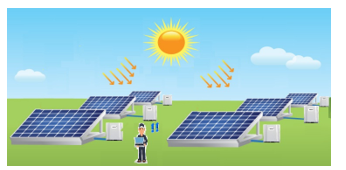 Figure 3: The need of the operator presence in the field to retrieve data
Figure 3: The need of the operator presence in the field to retrieve data
The recovery of stored data can be provided in two ways; either via wireless Bluetooth or wired Ethernet. Practically, this monitoring system has a major issue: regardless of the used recovery method, there is always a need for an operator to be in close contact with the installation (figure 3). While the Bluetooth offers a wireless connection to the inverters, it does not allow real-time data recovery from distant locations.
2.2. Objectives
The main objective of this work is the development of a PV monitoring system to transfer data in real-time to a remote operator. To implement such a system, we should be ensuring the following points:
- A communication with the inverters via Bluetooth protocol.
- The data recovery in Bluetooth mode.
- The pre-treatment of data with SBF application.
- The wireless transfer of data to the server via WiFi.
- The data visualization by the operator in real-time via the Internet.
- The creation of a web interface for the storage and processing of retrieved data on the supervision machine.
The proposed system will provide us with a wireless communication to the inverters via the Bluetooth protocol. Once received, the data will be pretreated then transferred to the remote control machine trough the network via Wi-Fi or directly stored in an online database (figure 4).
3. Equipment
3.1. Comparative study
The choice of equipment was constrained by some specifications.
The recommended equipment should:
- Have a reasonable price;
- Support the Bluetooth and the WiFi protocols;
- Have at least a 1 GHz CPU and a 1 Gb RAM;
- Card compatible with the most popular operating systems;
- Have a rich library and documentation.
There are multiple variants of nano-computer on the market that, relatively, encounter those conditions such as Orange PI, Odroid, Banana Pi M3 , Raspberry PI3 and Arduino. We chose the Raspberry Pi3 card after a comparative study, because it is the most appropriate among all the other cards[7].
Indeed, the Raspberry Pi is the undisputed heavyweight champion of the world. Beside it is most powerful, the most compact, and the cheapest; its devotees are legion, several developers use it in several projects, which means that its use is more convenient than others are.
3.2. Raspberry Pi
The main component on which our system is built is the Raspberry card.
The Raspberry Pi3 is a small integred computer in the size of the hand, with a price not exceeding 40 $ and most-lowest power consumption, less than 5 Watt. Designed at the University of Cambridge to help to teach programing, electronics and intelligent control systems at the same time. Its performance making this nano-computer astonishing success in both the educational and applied fields [5].
It works not only with numerous variants of Linux operating system but also with Microsoft Windows OS such as Windows 10 and phone operating systems.
Numerous versions of Raspberry Pi3 have been made from the time when the original Model B was created, each bringing either upgraded specifications or features specific to a particular use-case. All models feature a Broadcom on Chip (SoC) system and are compatible with a 700 MHz to 1.4 GHz compatible CPU and an integrated memory ranging from 256 MB to 4 Gb.
For our choice of equipment, our electronic and computer system is based on Raspberry PI3 (figure 5), its performances are:
- 4 GHz processing CPU
- 1Gb RAM
- Wi-Fi 802.11n (150 Mbit/s) and Bluetooth 4.1 (24 Mbit/s)
3.3. Operating System
Like any computer system, the Raspberry Pi requires an operating system OS to work. Choosing an operating system is difficult task. The choice is based on the needs of the user but also on his tastes and preferences.it is thus difficult to say that such a system is the best. but for our case the adequate OS is Raspbian.
Rasbian is the reference OS for Raspberry Pi. It is based on Linux Debian and is updated very regularly. Optimized specifically for Raspberry PI, it is a versatile distribution.
The greatest strength of Raspbian it not even the OS itself but its community and its reputation well-known by developers around the world [7].
4. Overview of the proposed PV wireless monitoring system
Our proposed electronic and computer system (software and hardware) is constructed around six photovoltaic panels and their inventers. Each inverter is equipped with a Bluetooth module that will communicate with the Raspberry Pi3. This latter pays the main role of putting the link between the inverters and the servers in order to retrieve the data and store it directly in on line database (figure 6).
The installed wireless monitoring, give us the measurement of several quantities parameters by which we can qualify our panels performances. The quantities measured are Current, Voltage, and Energy as electrical parameters. Illumination and Temperature as metrological parameters.
Three parts are included in our proposed wireless monitoring system, which are:
- The data acquisition.
- The data processing.
- The data storage and transfer.
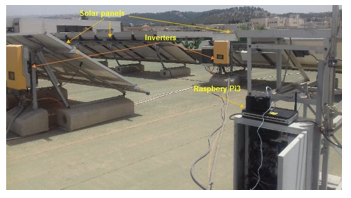 Figure 6: Prototype of our wireless PV monitoring system
Figure 6: Prototype of our wireless PV monitoring system
4.1. Data acquisition
As stated in the second section, the inverters are associated to a system of storage of several parameters in real time. Our system will retrieve it remotely via Bluetooth Protocol.
Bluetooth is a radio communication; this type of technology does not require a large amount of energy. Bleutooth technology starts by generating radio waves. The value of frequency, when generated, is 2.45 GHz, a universally recognized value for industrial, scientific and medical devices. It is possible to establish several connections using Bluetooth in the same area; this will not affect them because there are different frequencies for each device at different times, called scattered frequency hopping. This technology allows the use of more than 79 frequencies randomly in a certain area. Note that the value of the frequency changes constantly, which means that the value of the frequency will be submitted 1600 times per second by a Bluetooth device, as result the radio spectrum will benefit a group of peripherals.
The Bluetooth is a protocol with Master/Slave architecture. Master has to connect with up to seven slave simultaneously, which call piconet. In the piconet there are up to 255 slaves in parcked mode. Thus, give us the chance to connect many inverters [8].
4.2. Data processing
For the data processing step we use the either Windows Sunny Explorer or SBFSpot [9].
The installation of the Sunny Explorer application is now possible after the launch of the Windows 10 operating system on the ARM platform of Raspberry PI3, which resolves our old compatibility problem between Windows applications and the ARM architecture.
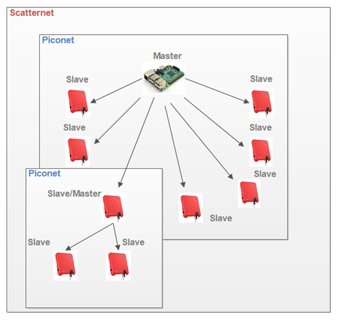 Figure 7: Organization of a Bluetooth network into scatternet and piconet
Figure 7: Organization of a Bluetooth network into scatternet and piconet
The proposed alternative is to use the SBFSpot application and the PVOutput [7] is an open source project to get actual and archive data out of the inverters over Bluetooth, it allows retrieving data from the inverters via Bluetooth, while the PVOutput stores the data and processing them into graphical figure. We also note that we developed our own interface application for the results visualization.
Finally, by those applications we are allowed to process the received data from our station (figure 8).
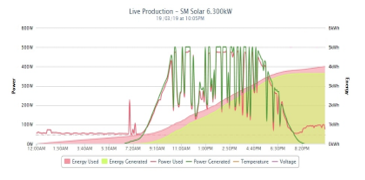 Figure 8: Different electrical parameters retrieved from the PV installation
Figure 8: Different electrical parameters retrieved from the PV installation
4.3. Data transfer
The next phase is to transfer processed data to the control machine via Wi-Fi. We have two situations for control our power station. The control machine is either inside the institution or outside of it. For each situation, we used different secure method of transfer: SSH, secure and simple method of transfer. VNC virtual network computing, secure and complex graphical method.
Both methods require the installation of a server on the Raspberry PI3 card and a client on the control machine.
Data transfer via SSH
SSH [10], or Secure Socket Shell, is a network protocol that allows administrators to remotely access a computer in complete security. The Secure Shell protocol is a compensation of the previous protocol Telnet service where the transfer of information was open and vulnerable; allowing users of certain programs to spy on sensitive information such as username and password, while SSH is more powerful than its predecessor by encrypting the data transmitter between the user and server.
SSH is an open source application that allows you to open a terminal session on Raspberry PI3 from a command line on the host computer. By default, SSH is installed on the Raspberry PI3, but is disabled for security reasons. The first thing to do is to activate SSH on your Raspberry PI3. For that, you just have to connect the MicroSD card of Raspberry Pi on our computer, to go on the map, and to create a file named ssh in the boot partition, then install the SSH client on the control machine using the PuTTY emulator.
Data transfer via VNC
To control remotely in full desktop we use VNC [11].
VNC, or Virtual Network Computing, is a protocol that allows distant control of one computer by another. When using VNC, two different parts of the software are used.
The first part is the VNC server is installed on the Raspberry Pi3 side. The second part is the VNC client. It is installed on the control machine side, by which we will control and connect to the server to execute our requests remotely.
After installing and enabling VNC server by SSH command. Now we should simply put the address of our card in order to get remote graphic control of the raspberry desktop.
On the other hand, the choice of the machine address is related to the previous situations, either outside the institution and inside of it. If the control machine is inside so we used the RealVNC with a private IP address, , while if the machine is outside, we will need to use RealVNC with a pair containing a public IP address and a specified port assigned to the private address of the Raspberry card. In the case of a dynamic public address, use the dynamic No-IP DNS service.
5. Conclusion
In this article, we proposed the design and tests of a wireless monitoring system from a remote location based on three layers: the acquisition, the processing, and the storage and web service layers. The proposed system comes as a more compatible, flexible, and powerful system by solving the faults in our old system.
The main advantage of this supervision system is that it is a low-cost and low-power system with highly scalable software. The system is built around a nano-computer (the Raspberry PI3 card), a wireless protocol (Wi-Fi and Bluetooth) and an open-source application. Thus, providing us with a connection to the inverters and process the received data remotely and finally present them directly on our processing machine.
After some modifications and improvements, the proposed remote system, and the implementation of the application. Our system of monitoring has been validated and successfully tested by field trials.
Conflict of Interest
The authors declare no conflict of interest.
- Y. Bikrat, K. Salmi, A. Benlghazi, A. Benali, and D. Moussaid, “A Photovoltaic Wireless Monitoring System,” in IEEE/2018 International Symposium on Advanced Electrical and Communication Technologies (ISAECT), 2018, pp. 1–5. https://doi.org/10.1109/ISAECT.2018.8618825
- O. Ellabban, H. Abu-Rub, and F. Blaabjerg, “Renewable energy resources: Current status, future prospects and their enabling technology,” Renewable and Sustainable Energy Reviews, vol. 39. pp. 748–764, 2014. https://doi.org/10.1016/j.rser.2014.07.113
- A. Tazarine and H. El Omari, “Designing of a photovoltaic system for self-consumption at the faculty of technical sciences of Settat,” in Proceedings of 2016 International Renewable and Sustainable Energy Conference, IRSEC 2016, 2017. https://doi.org/10.1109/IRSEC.2016.7984025
- M. Hochberg, “Renewable Energy Growth in Morocco An Example for the Region Renewable Energy Growth in Morocco,” 2016.
- G. M. Tina and A. D. Grasso, “Remote monitoring system for stand-alone photovoltaic power plants: The case study of a PV-powered outdoor refrigerator,” Energy Convers. Manag., 2014. https://doi.org/10.1016/j.enconman.2013.08.065
- Raspberry Pi Foundation, “Raspberry Pi 3 Model B,” Datasheet, 2016.
- Y. Bikrat, D. Moussaid, A. Benali, and A. Benlghazi, “Electronic and computer system for monitoring a photovoltaic station,” in IEEE/2018 International Conference on Intelligent Systems and Computer Vision (ISCV) https://doi.org/10.1109/ISACV.2018.8354018
- Arduino, “Arduino – Home,” Hardware. p. 1, 2016.
- J. DeCuir, “Introducing Bluetooth Smart: Part 1: A look at both classic and new technologies,” IEEE Consum. Electron. Mag., vol. 3, no. 1, pp. 12–18, 2014. https://doi.org/.1109/MCE.2013.2284932
- R. Pi, “Changelog of SBFspot install on a Raspberry Pi Preparing the Raspberry Pi for SBFspot,” 2014.
- F. Bergsma, B. Dowling, F. Kohlar, J. Schwenk, and D. Stebila, “Multi-Ciphersuite Security of the Secure Shell (SSH) Protocol,” in Proceedings of the 2014 ACM SIGSAC Conference on Computer and Communications Security – CCS ’14, 2014, pp. 369–381 https://doi.org/10.1145/2660267.2660286
- T. Tan-atichat and J. Pasquale, “VNC in high-latency environments and techniques for improvement,” in GLOBECOM – IEEE Global Telecommunications Conference, 2010. https://doi.org/10.1109/GLOCOM.2010.5683953
Citations by Dimensions
Citations by PlumX
Google Scholar
Scopus
Crossref Citations
- Kamal Azghiou, Manal El Mouhib, Youssef Bikrat, Ahmad Benlghazi, Abdelhamid Benali, "Guidelines for Scalable and Reliable Photovoltaic Wireless Monitoring System: A Case of Study." In Proceedings of the 2nd International Conference on Electronic Engineering and Renewable Energy Systems, Publisher, Location, 2021.
- Muhammet Şamil Kalay, Beyhan Kılıç, Şafak Sağlam, "Systematic review of the data acquisition and monitoring systems of photovoltaic panels and arrays." Solar Energy, vol. 244, no. , pp. 47, 2022.
No. of Downloads Per Month
No. of Downloads Per Country

